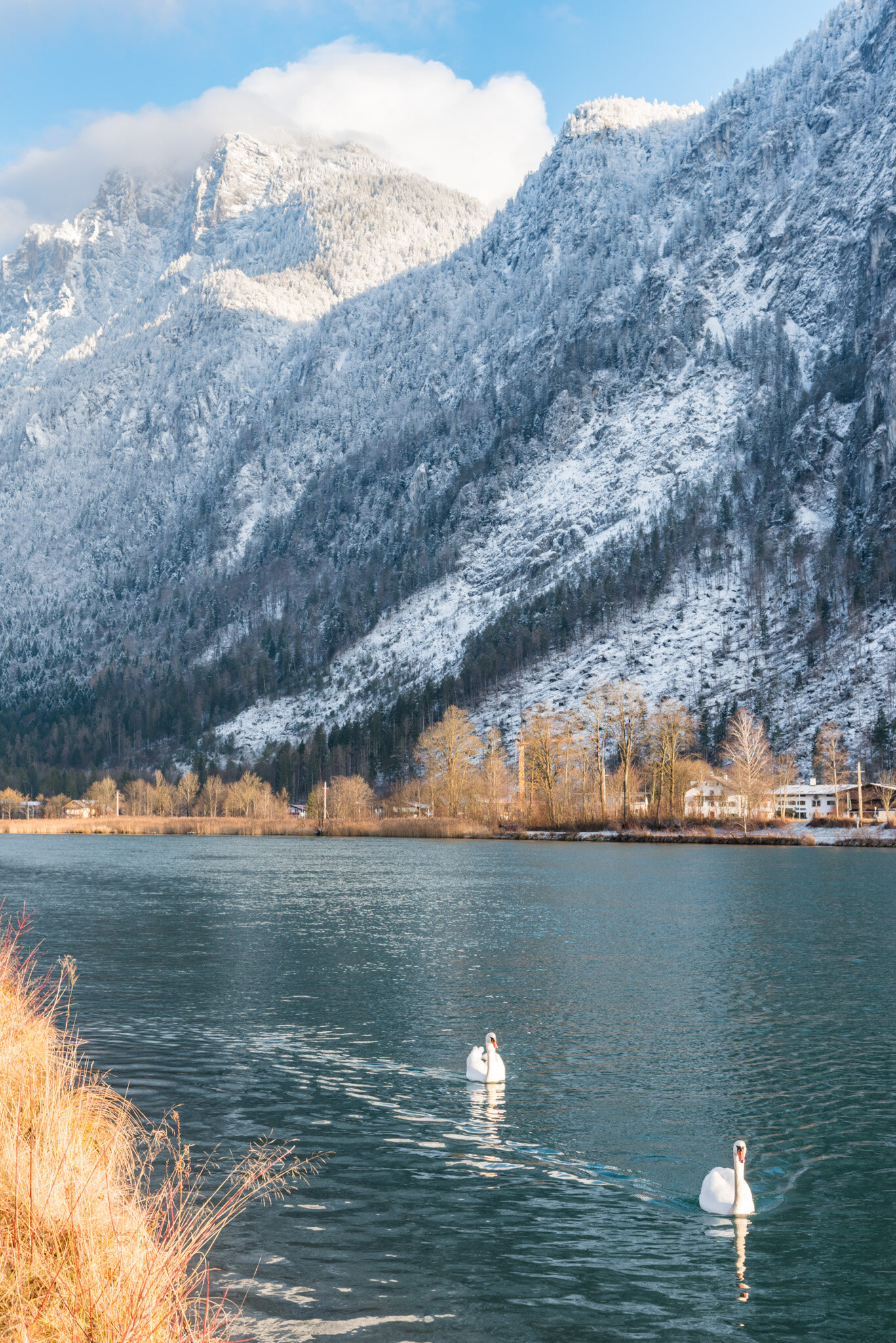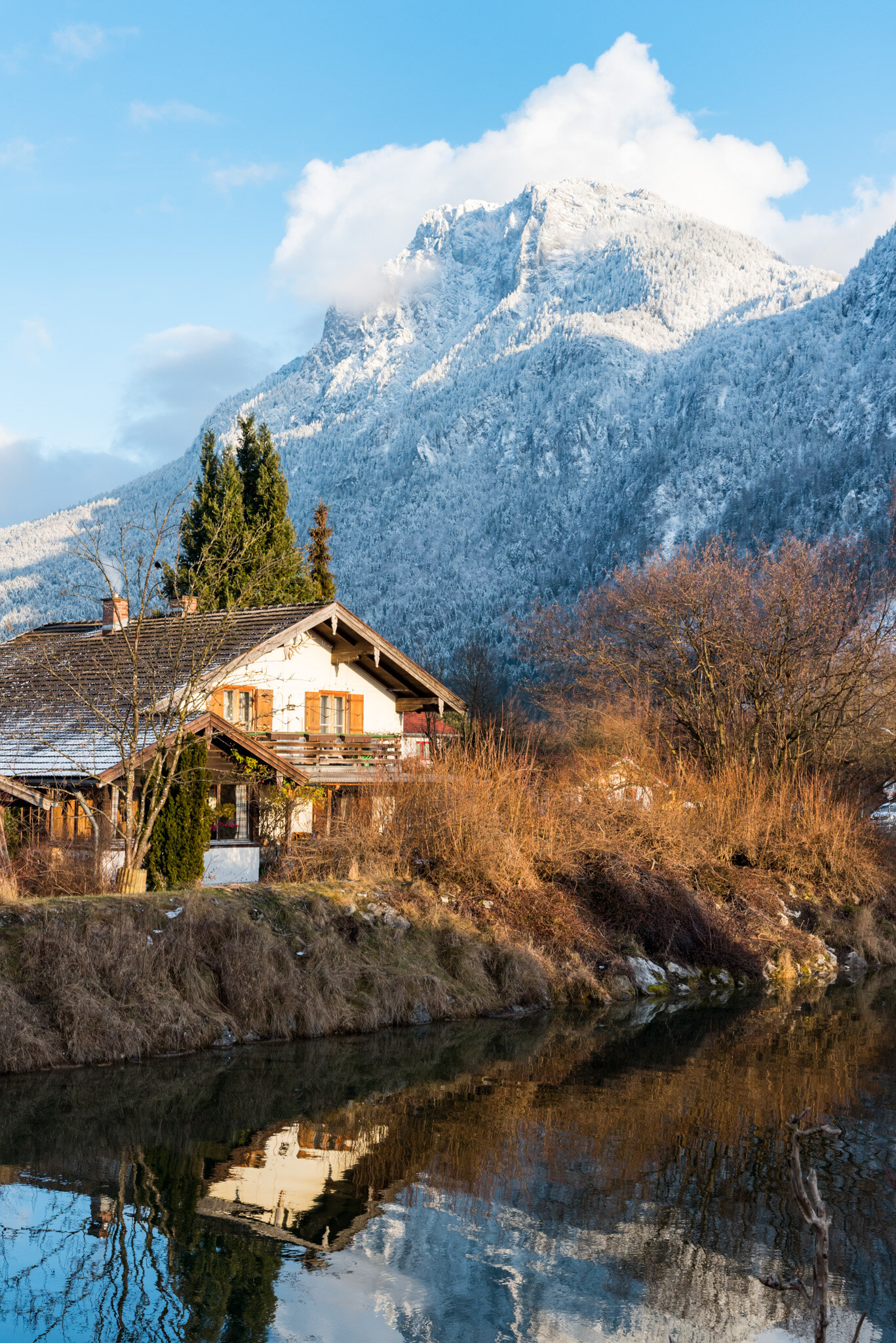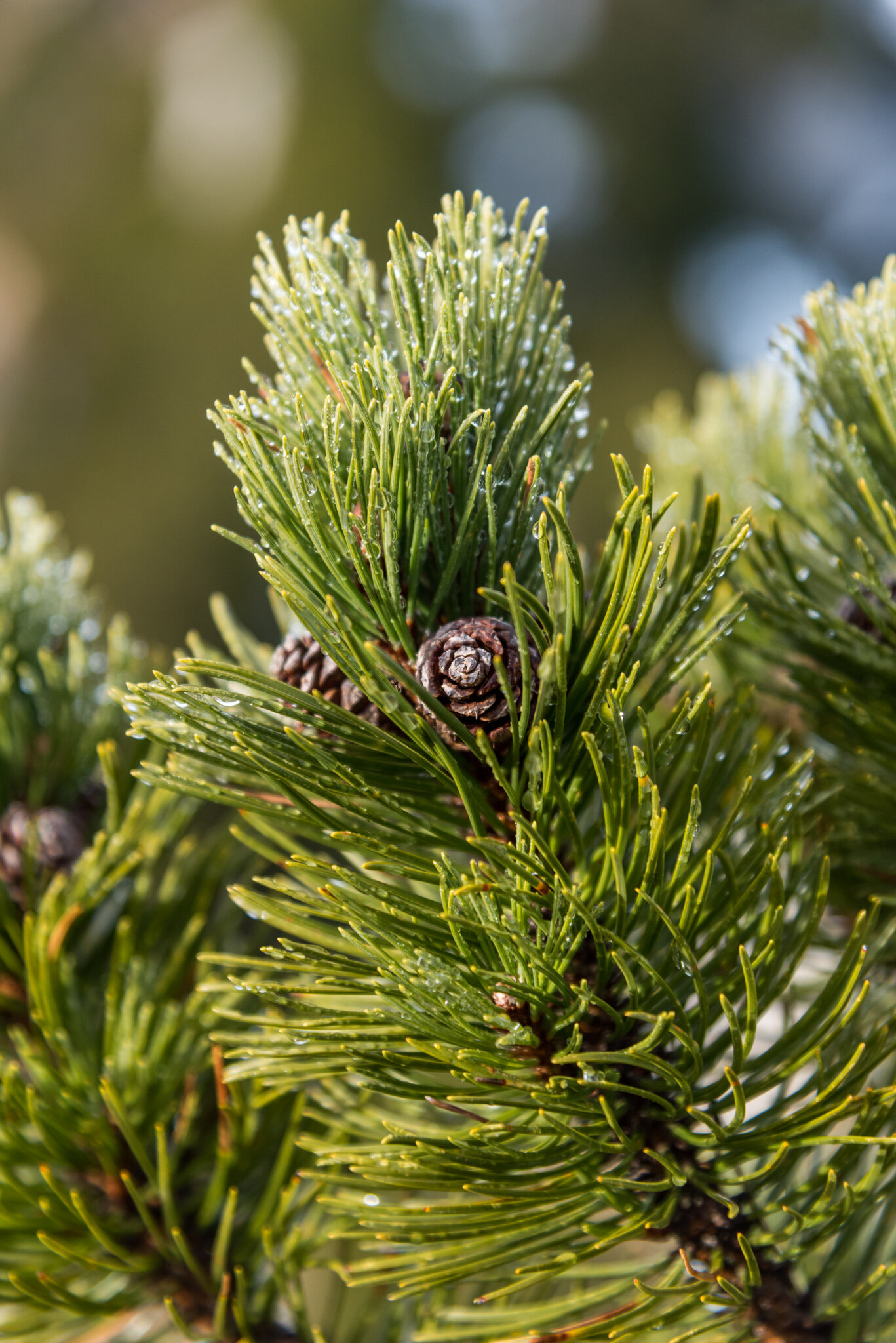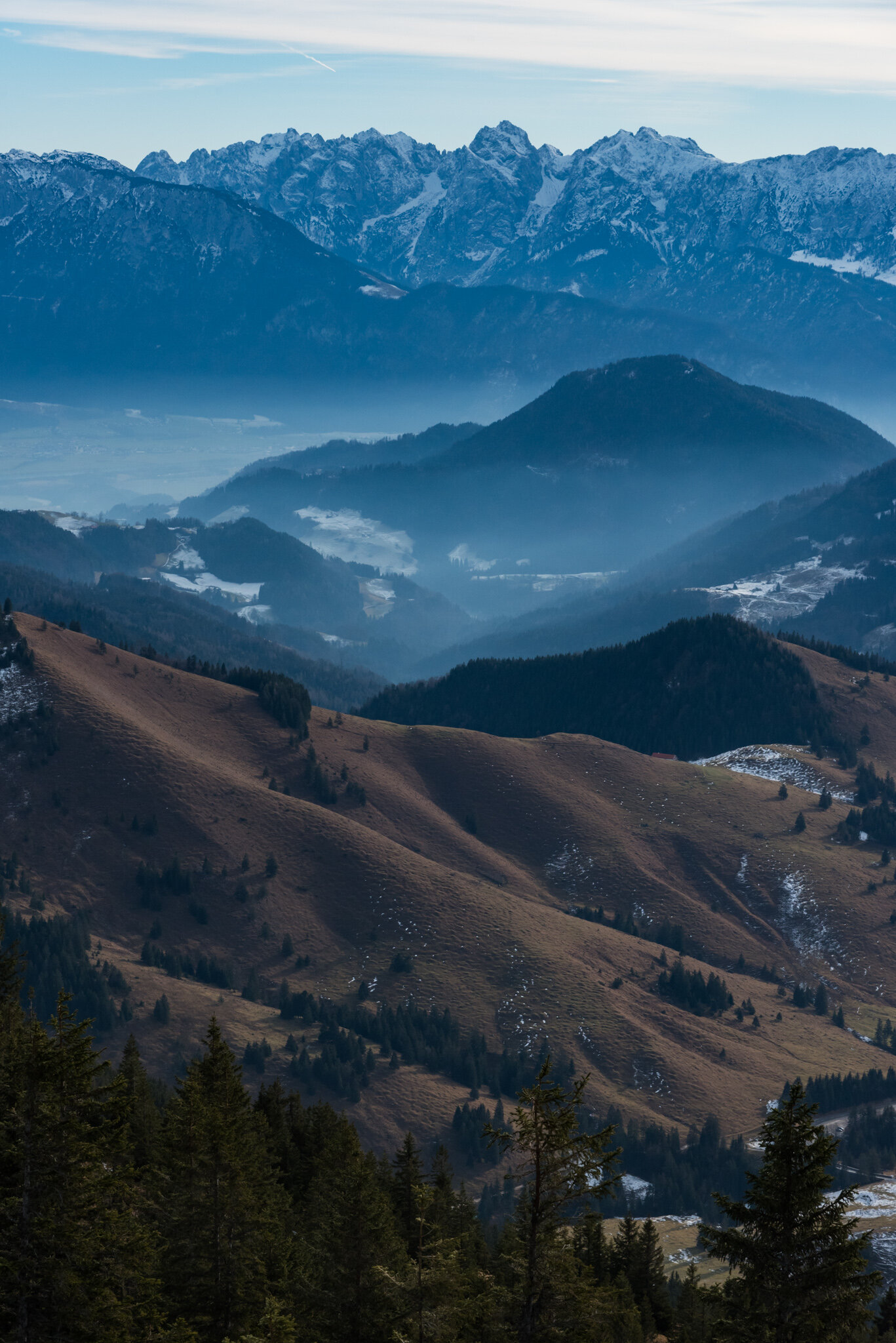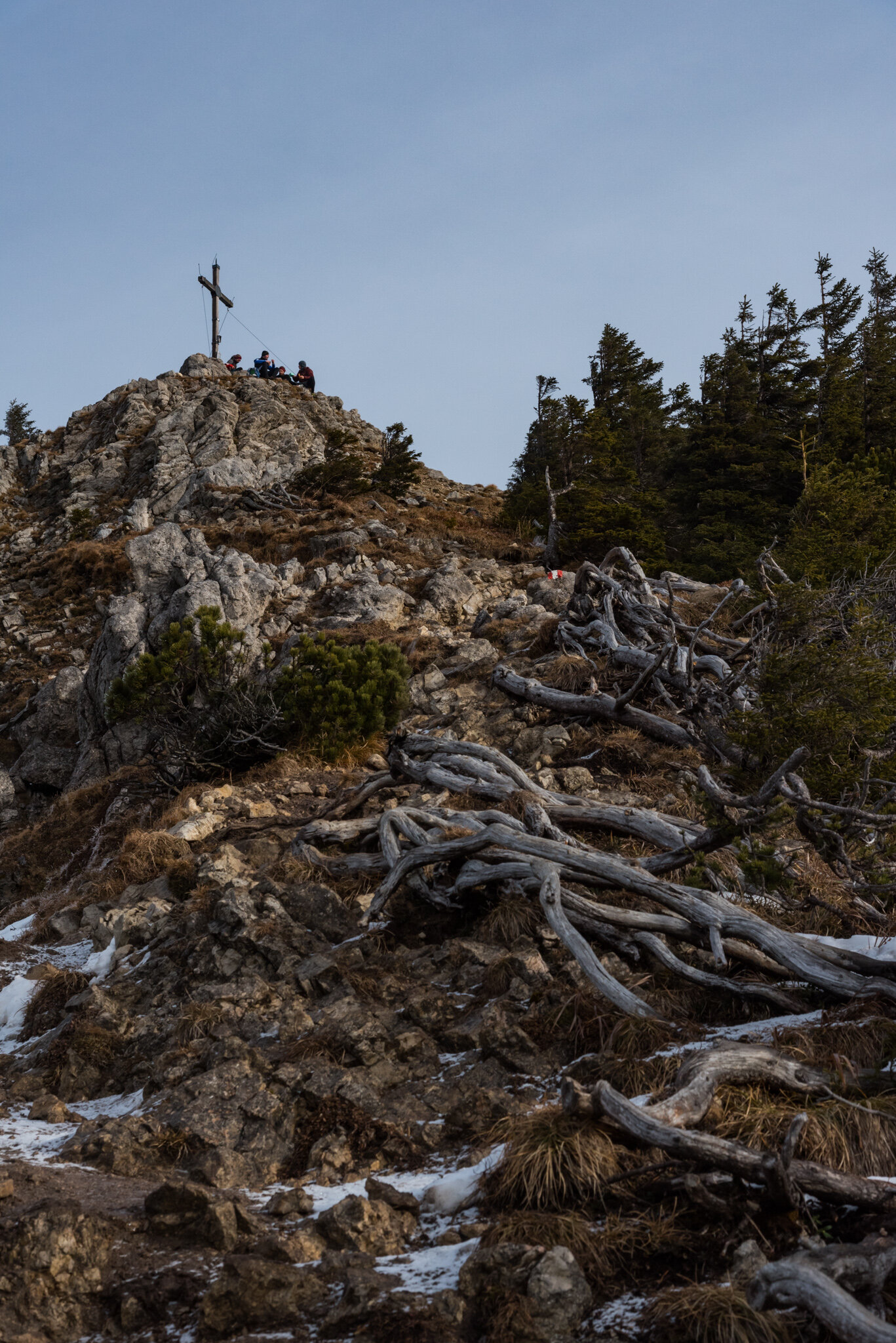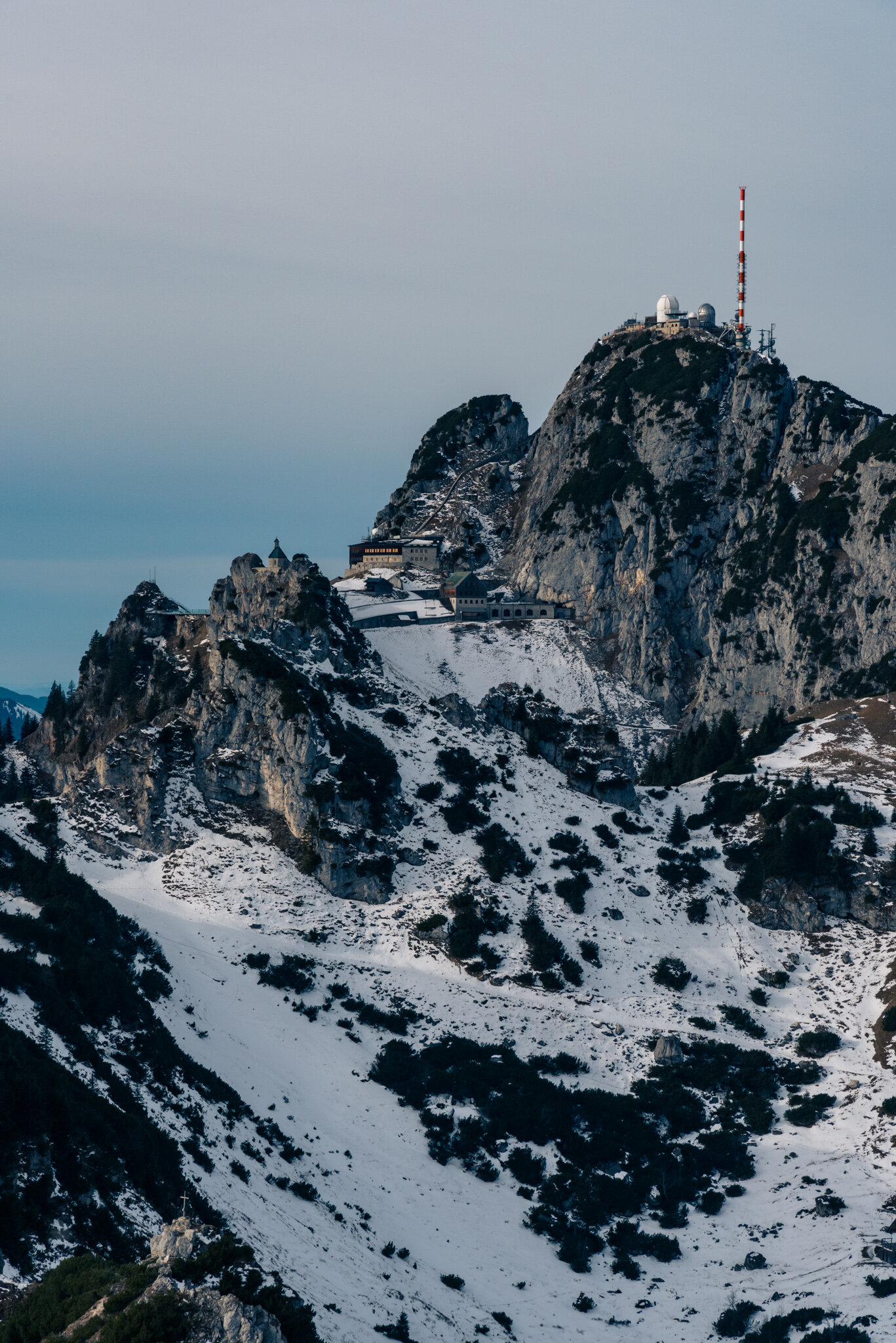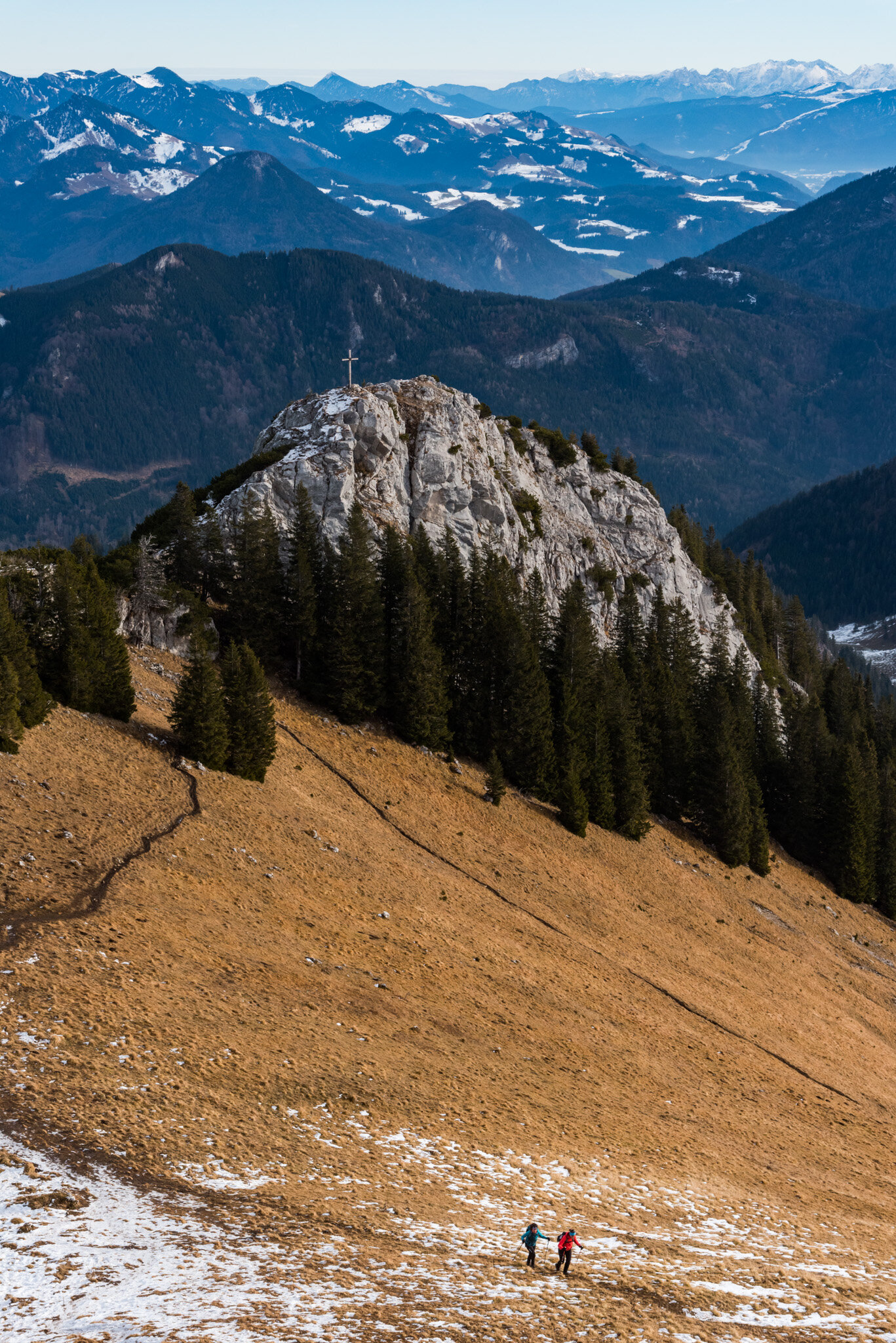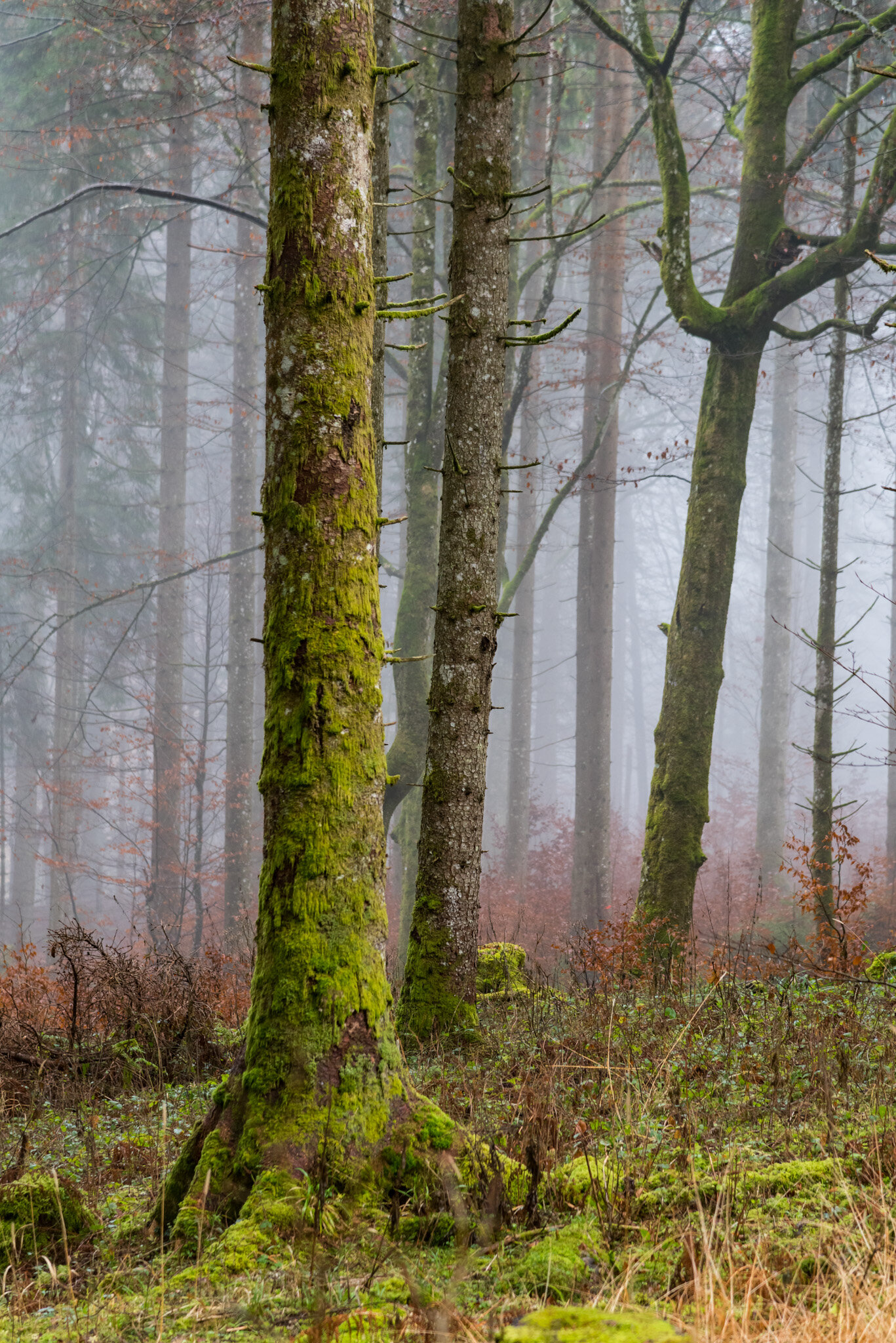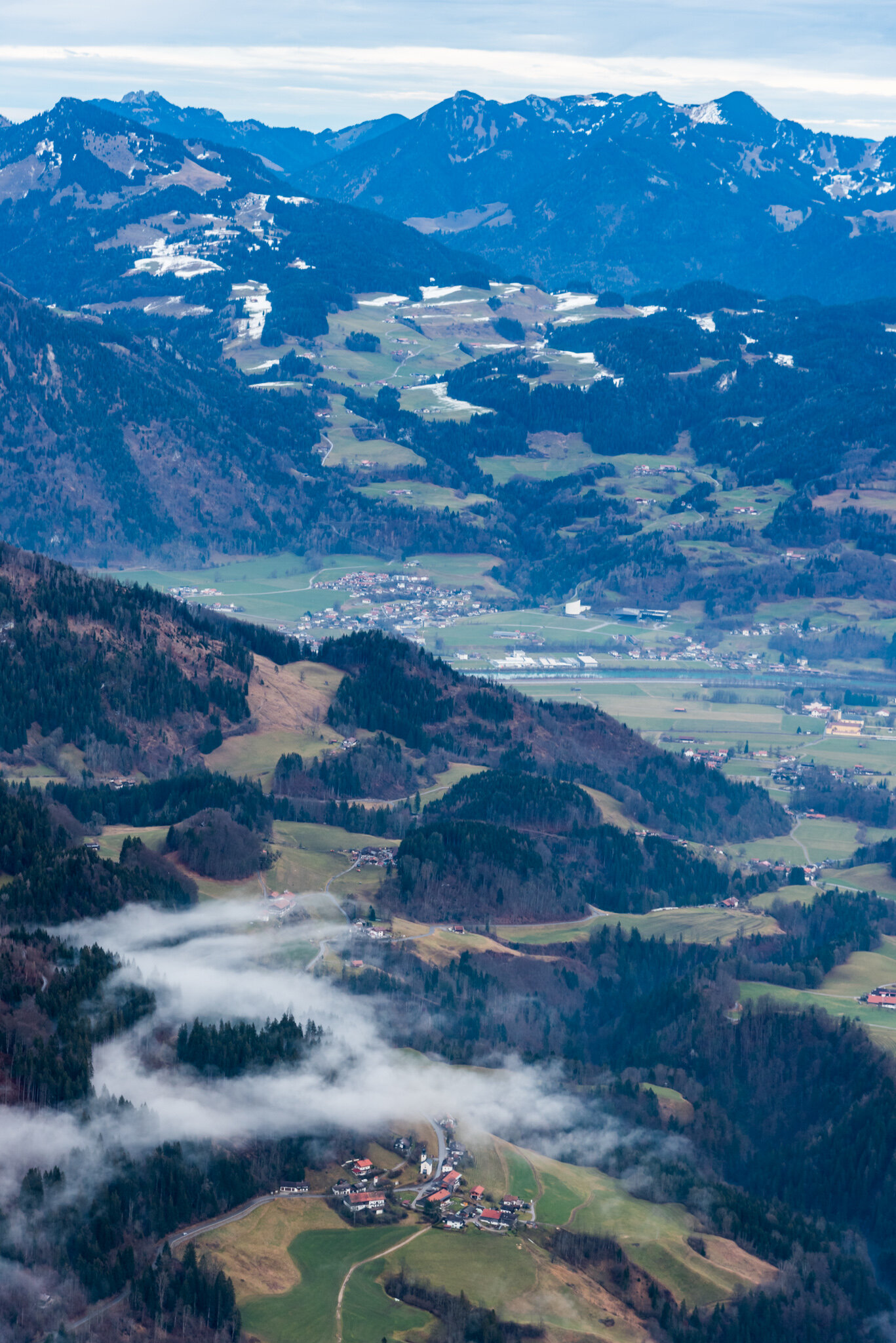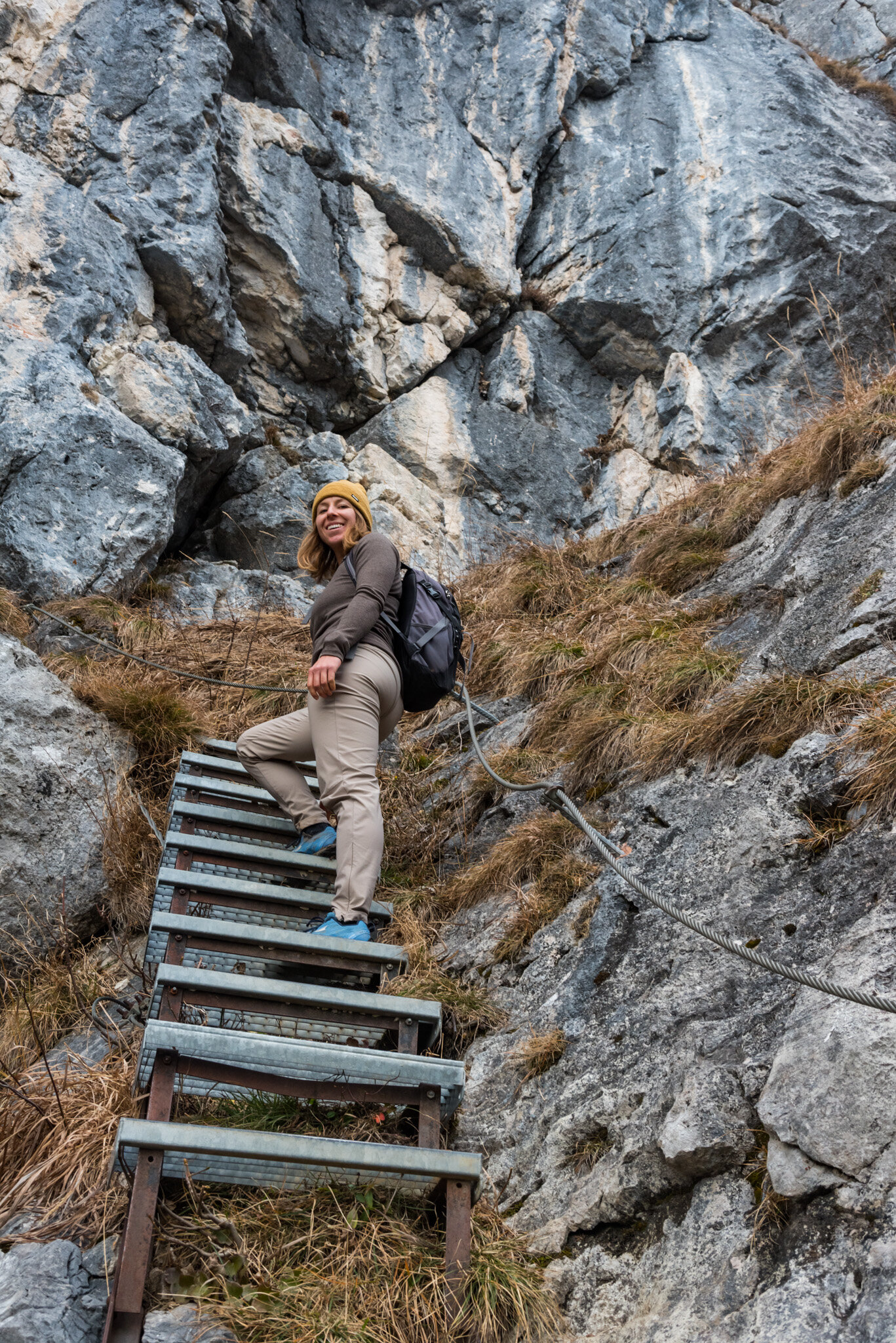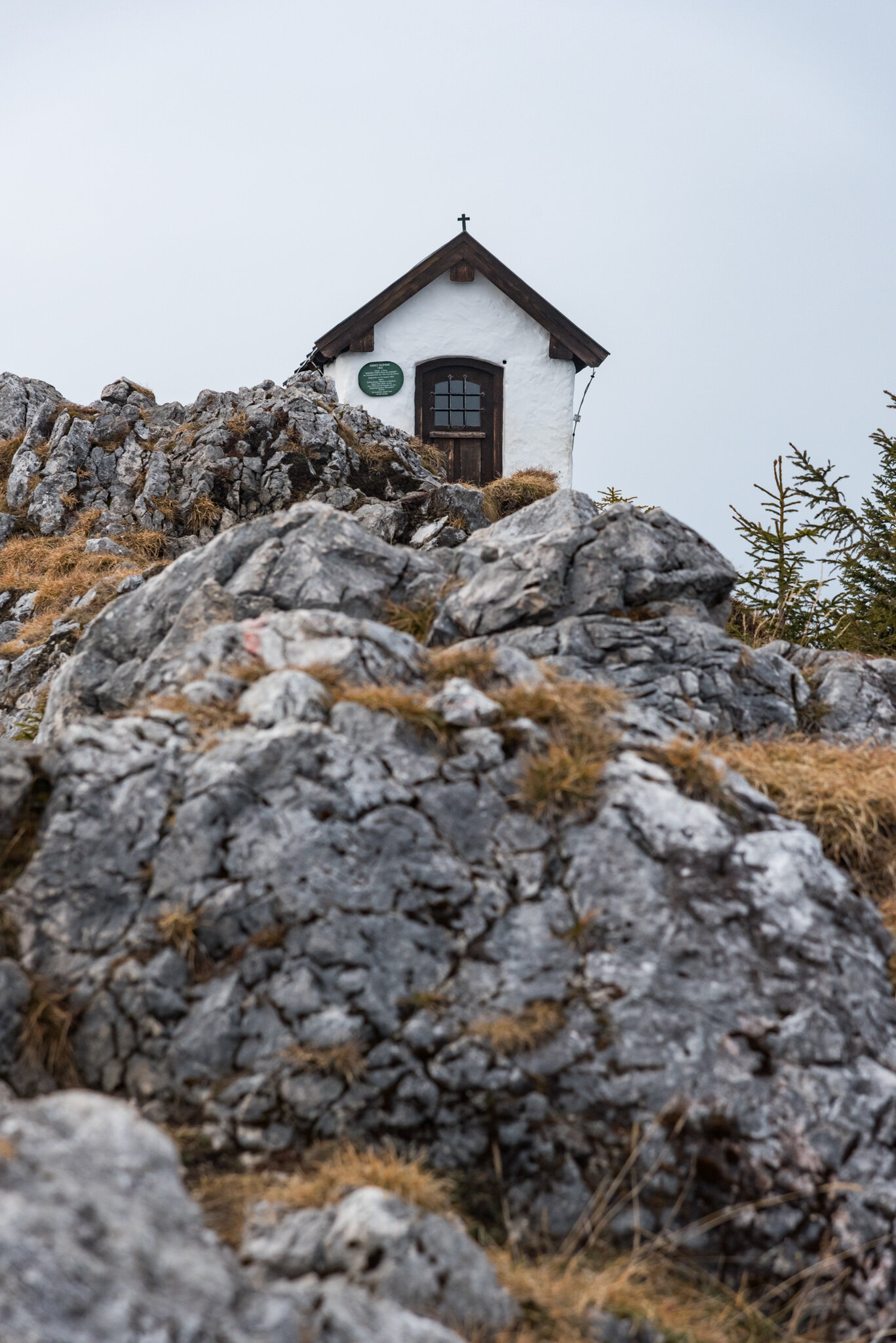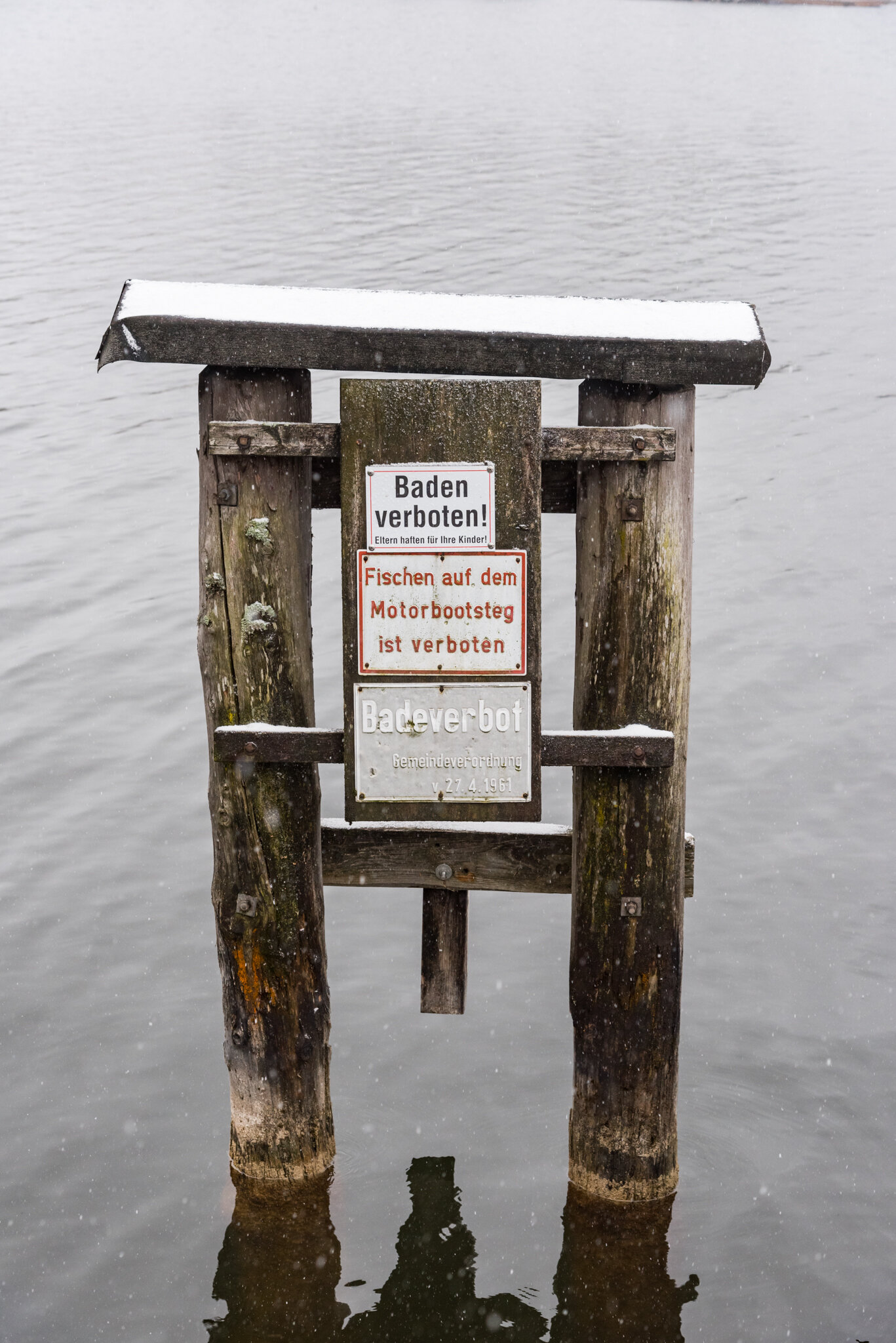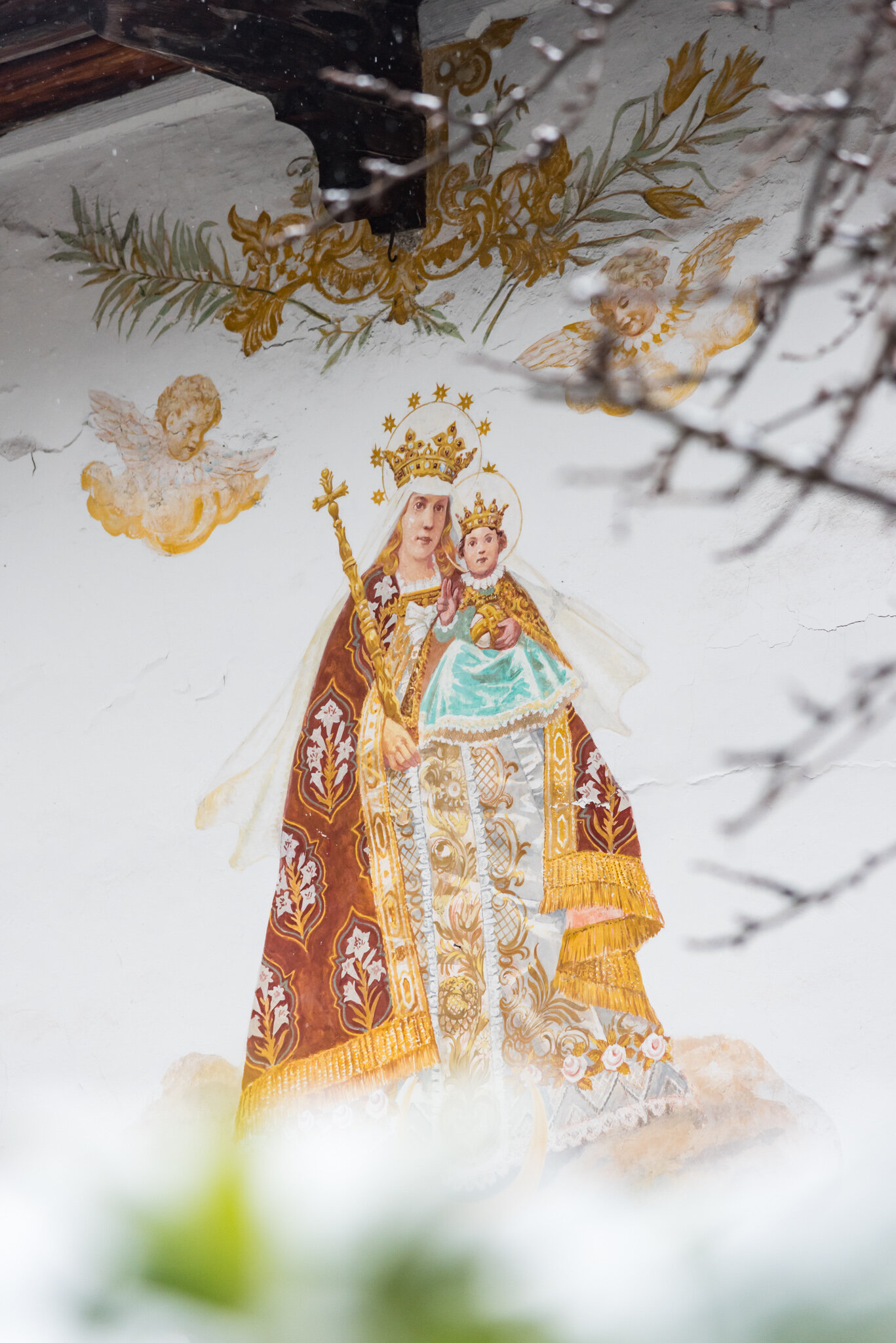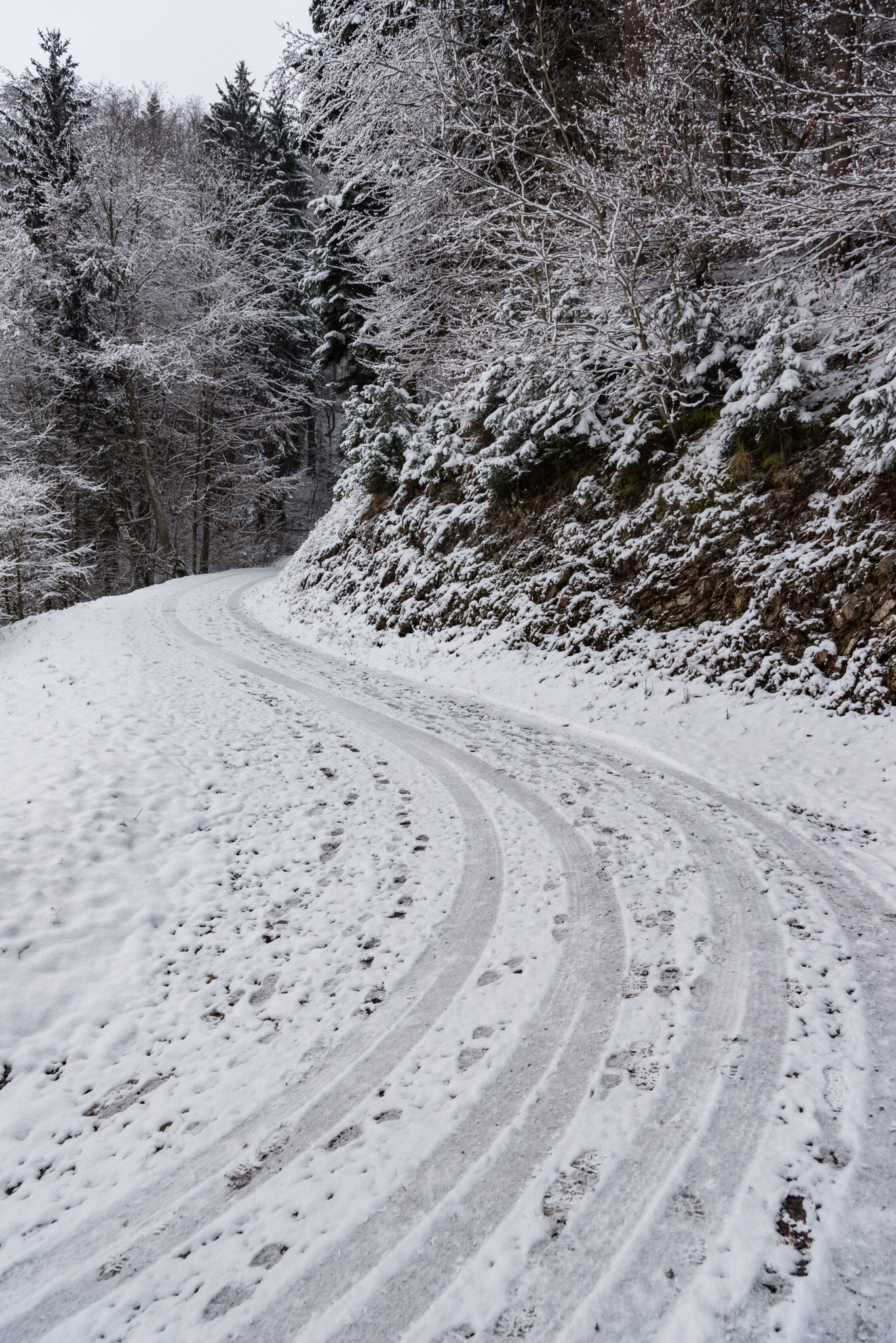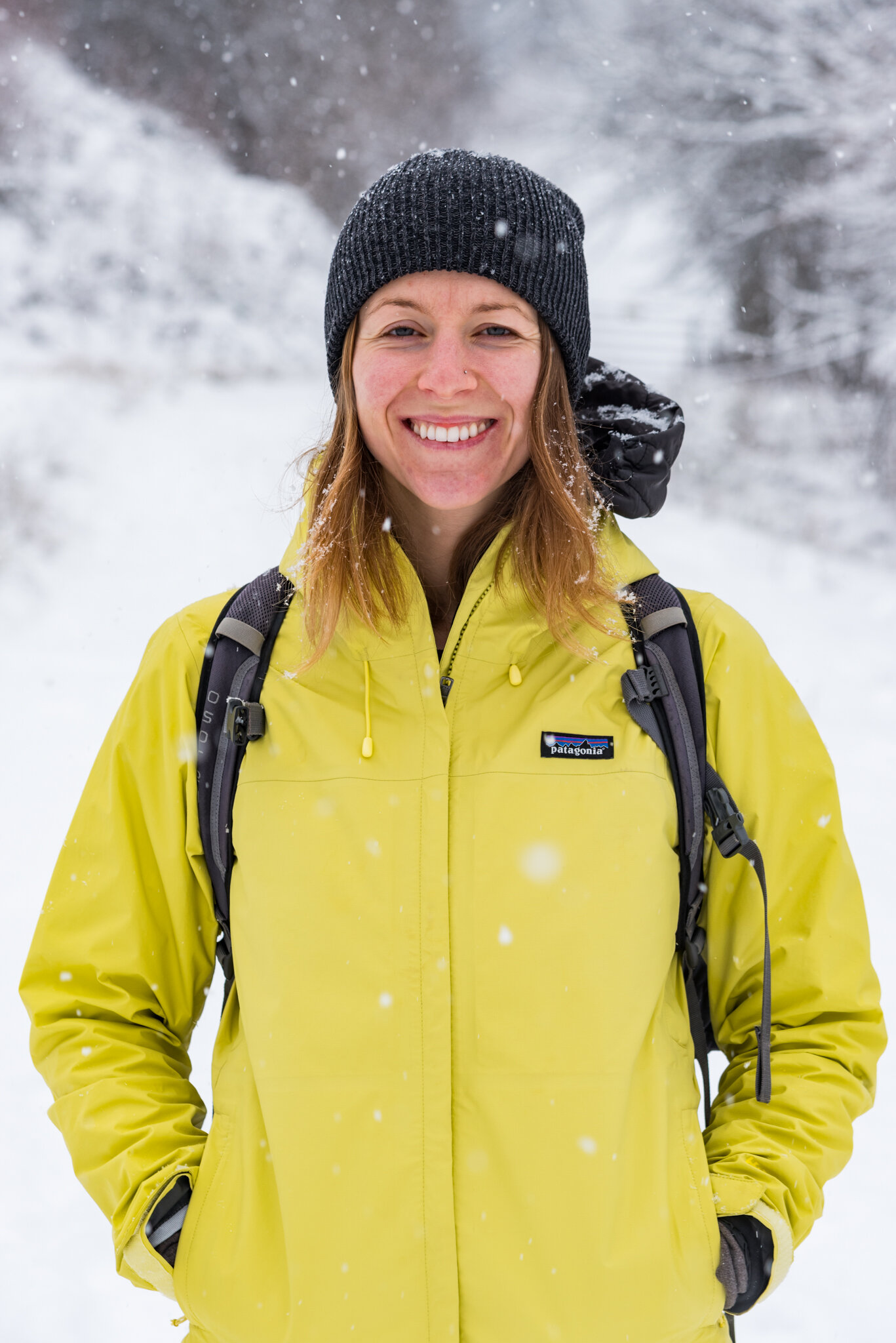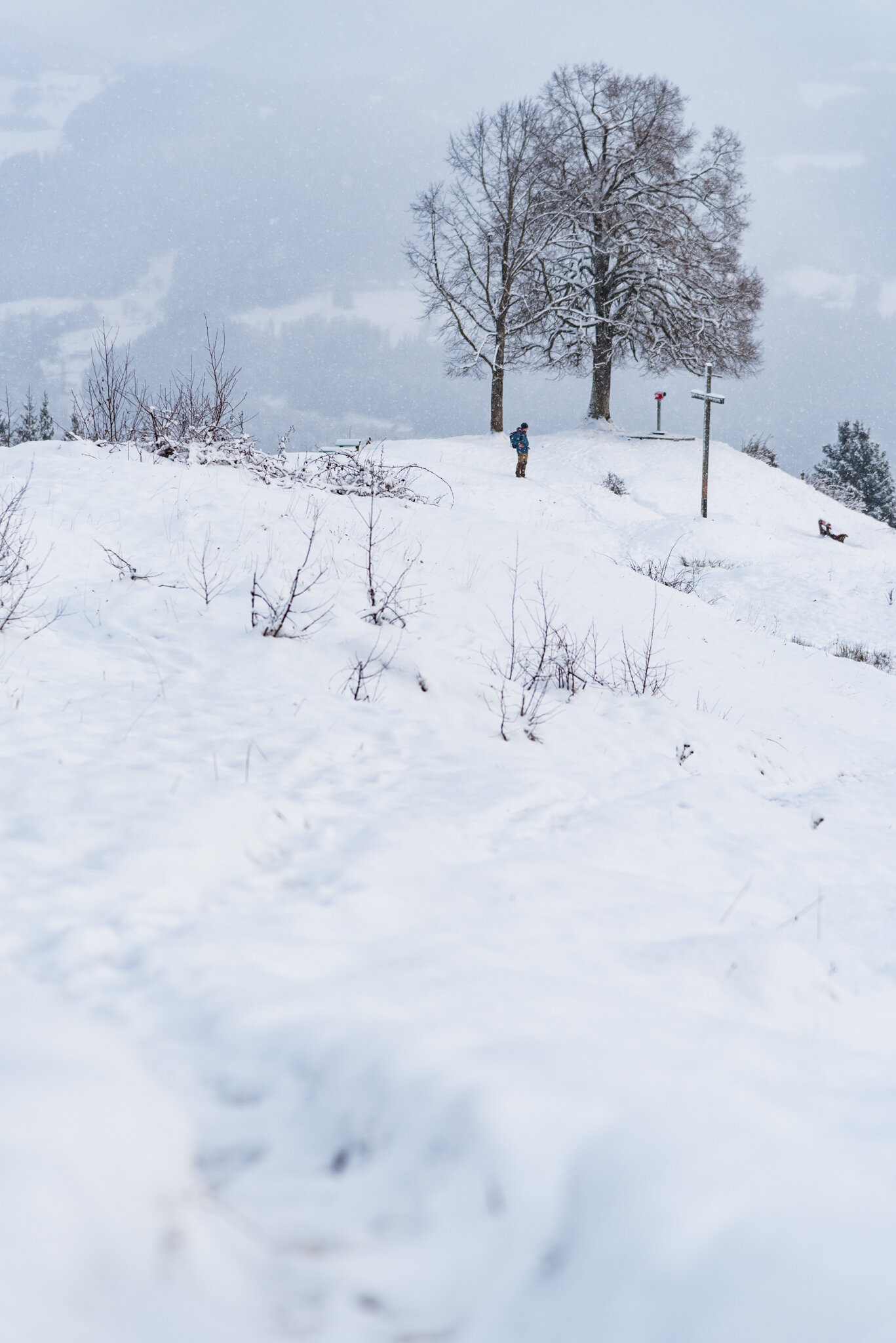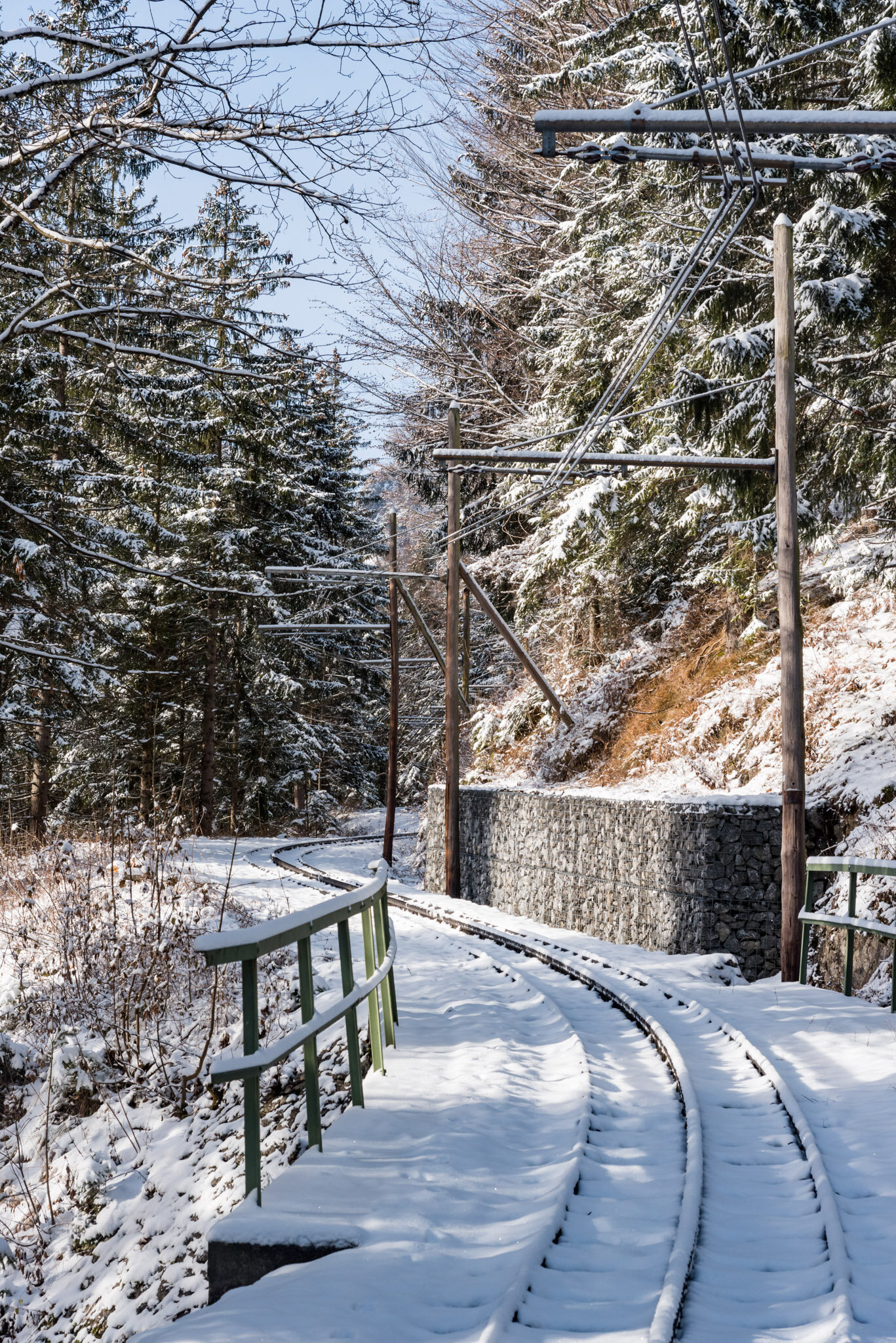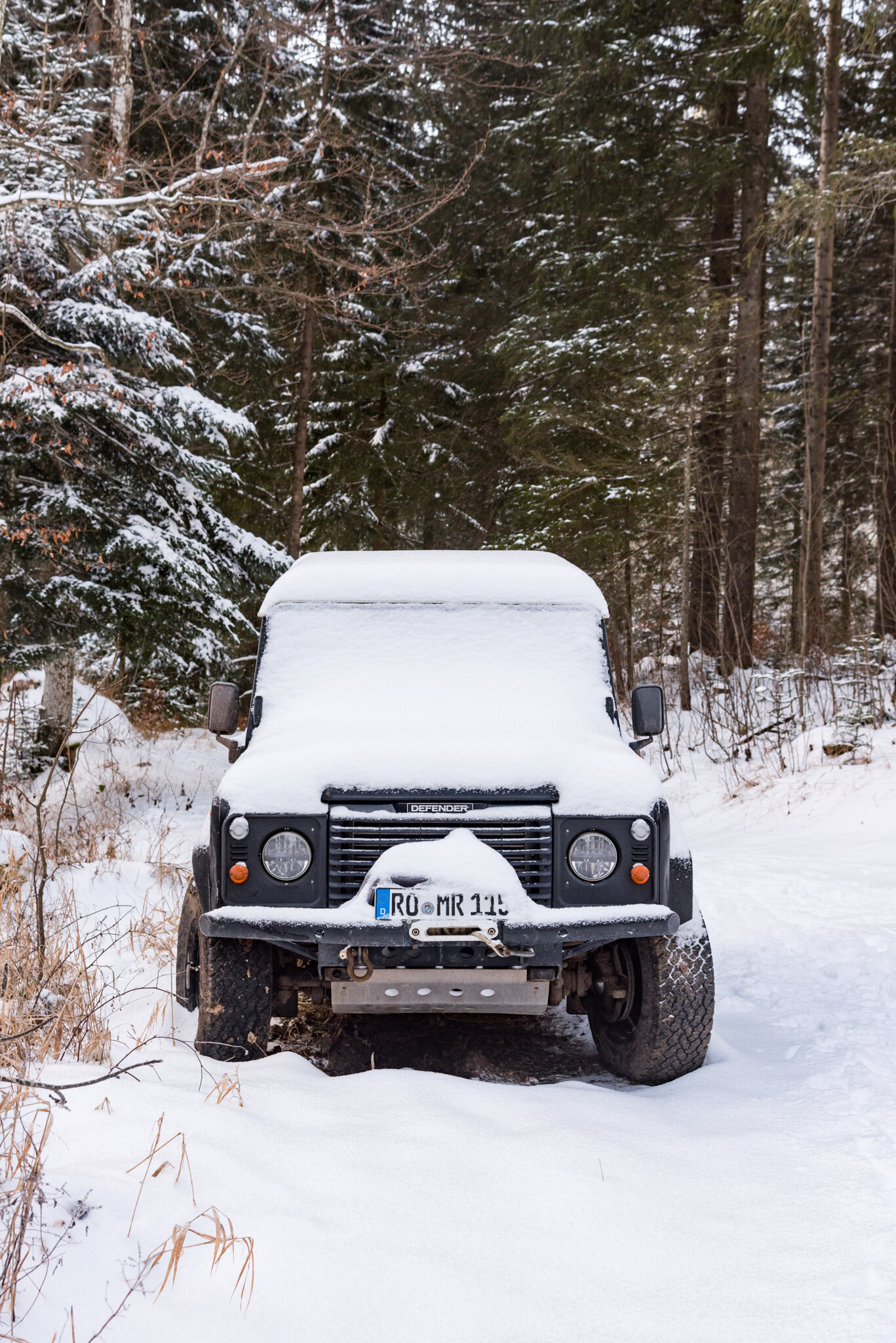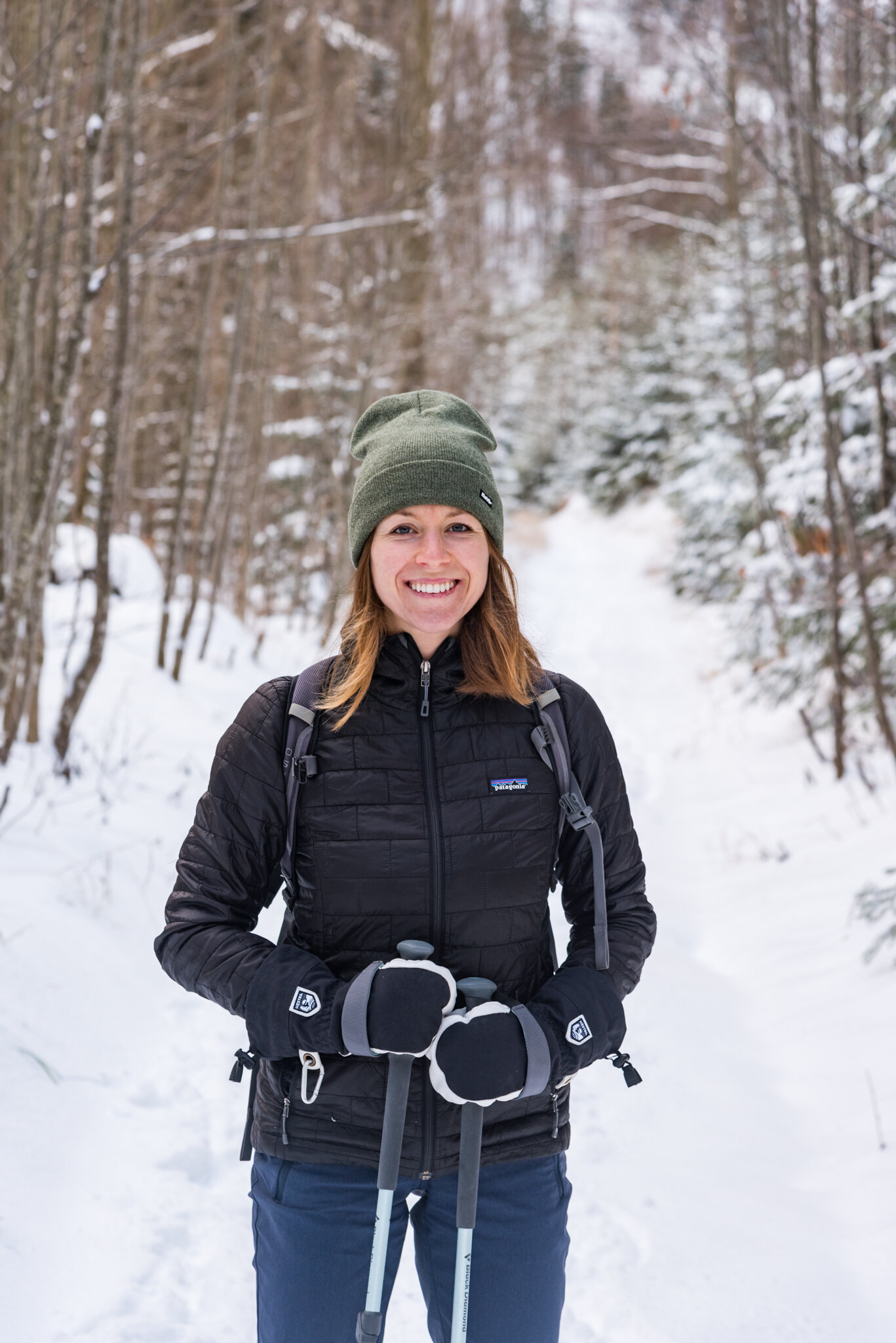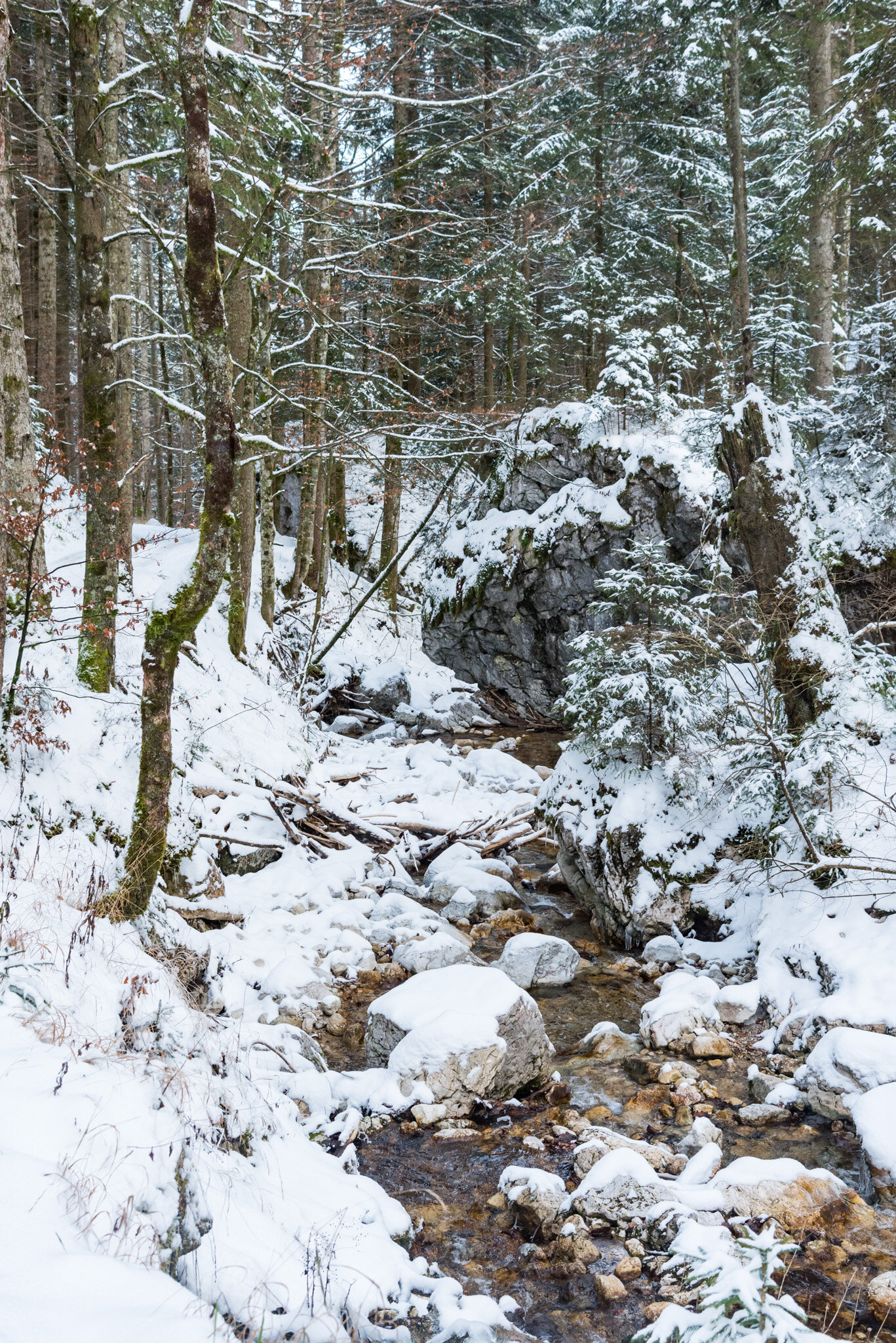The holidays were a little bit different this year. With travel restricted and lockdowns blanketing Europe my sister and I found ourselves an ocean away from our parents but only a 7-hour drive from each other. Rather than travel by plane, train, and automobile to California I rented a car, pointed it south, and bobbed my head to energetic music for 700 kilometers. Cruise control did the heavy lifting and before I knew it I was in Kiefersfelden, a tiny border town, and my sister’s new home. We hung out with our parents via video chat for the three nights of Christmas and spent as much time outside during daylight as possible.
Restrictions were tight but I was determined to be as active in the mountains as possible, and hiking was allowed. Everything past the Austrian border was off-limits but that still left plenty to explore. To kick things off I put my finger on the map and picked a peak to summit by myself while my sister was working. I hopped in the car on the cold morning after I arrived and navigated Kiefersfelden’s narrow Bavarian streets on my way to the mountains. I wound my way up into the hills, gingerly weaving around churches and wood-clad alpine homes. As I drove I kept an eye on the thermometer in the car’s display. It was hovering around 2º celsius as I made my way through town but as I gained elevation it dropped to -1º. To be safe I took turns at 10 km/h. I was investigating every patch of road along the way, wondering if it was icy but I couldn’t see any.
The backdrop to my slip and slide.
And that’s why it’s called black ice. I didn’t even have time to panic and try to fix my mistake. The moment my tires hit the patch of slick icy asphalt it was already too late. I slid sideways in slow motion, staring at the stone wall on the side of the road. I was resigned to my fate. My brand new rental car and the quickly approaching rock were about to become very intimate.
But then I jolted to a halt. I looked to my right across the empty passenger seat and inspected the rock wall, wondering why it was so far away. I climbed out of the car and noticed that there was a patch of gravel half a meter wide separating the pavement from the rock wall, which had stopped my slide. I let out a sigh of relief.
After a few minutes to steady my nerves, I started the car up and cautiously pulled back onto the road, driving even slower than before. As I neared the trailhead I came upon a field of ice blocking my way. Centimeters thick and blanketing the road as far as I could see up the hill into the distance, I realized I had no chance of making it to the top to my destination. I was discouraged by the weather but not willing to give up so I returned to the main road and drove until I found a parking lot packed with cars and vans.
Trusting the locals, I pulled over, suited up, and walked until I found a trail marker. It wouldn’t be the same as my planned hike, but after months in Berlin with not a mountain in sight, any peak would make me happy.
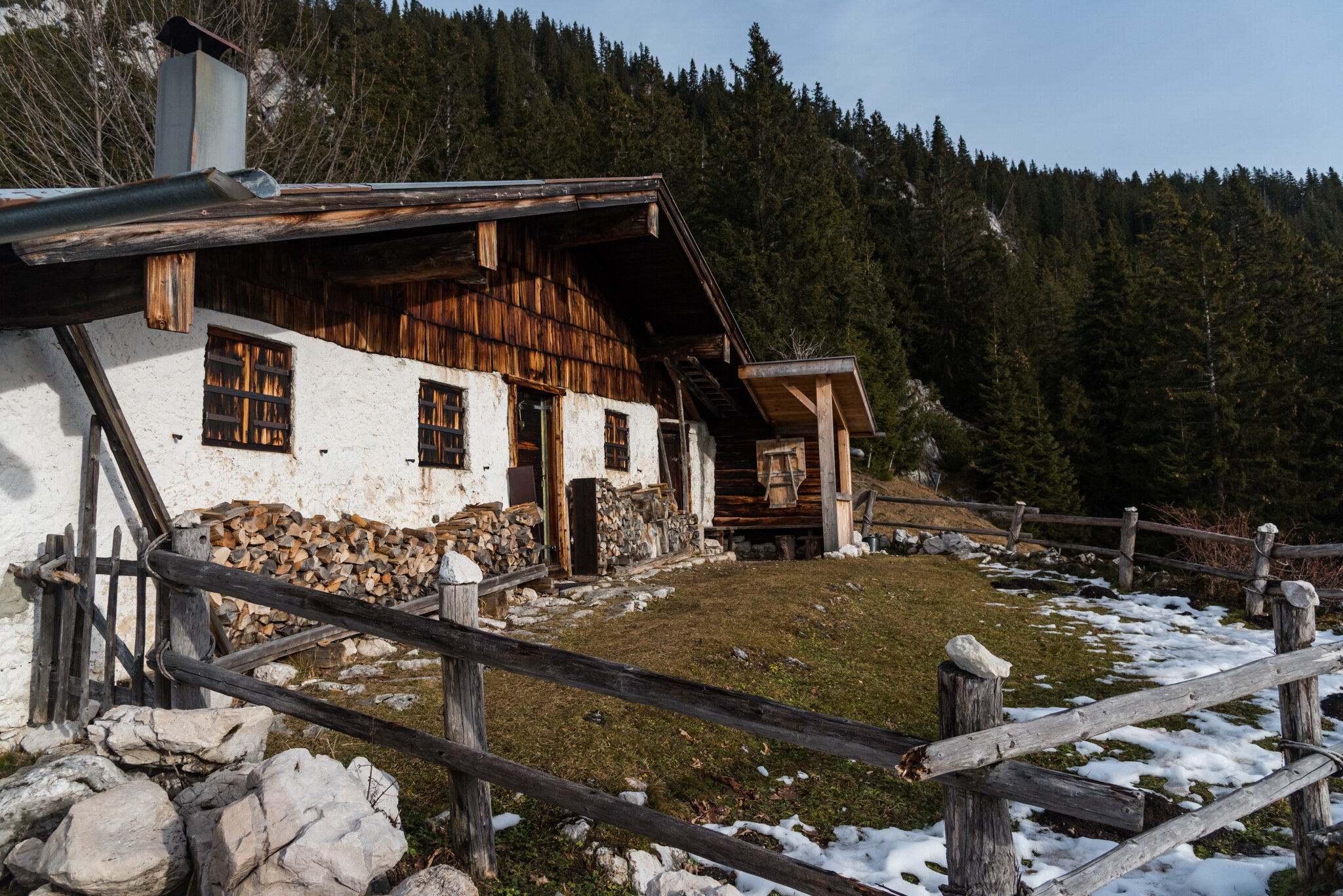
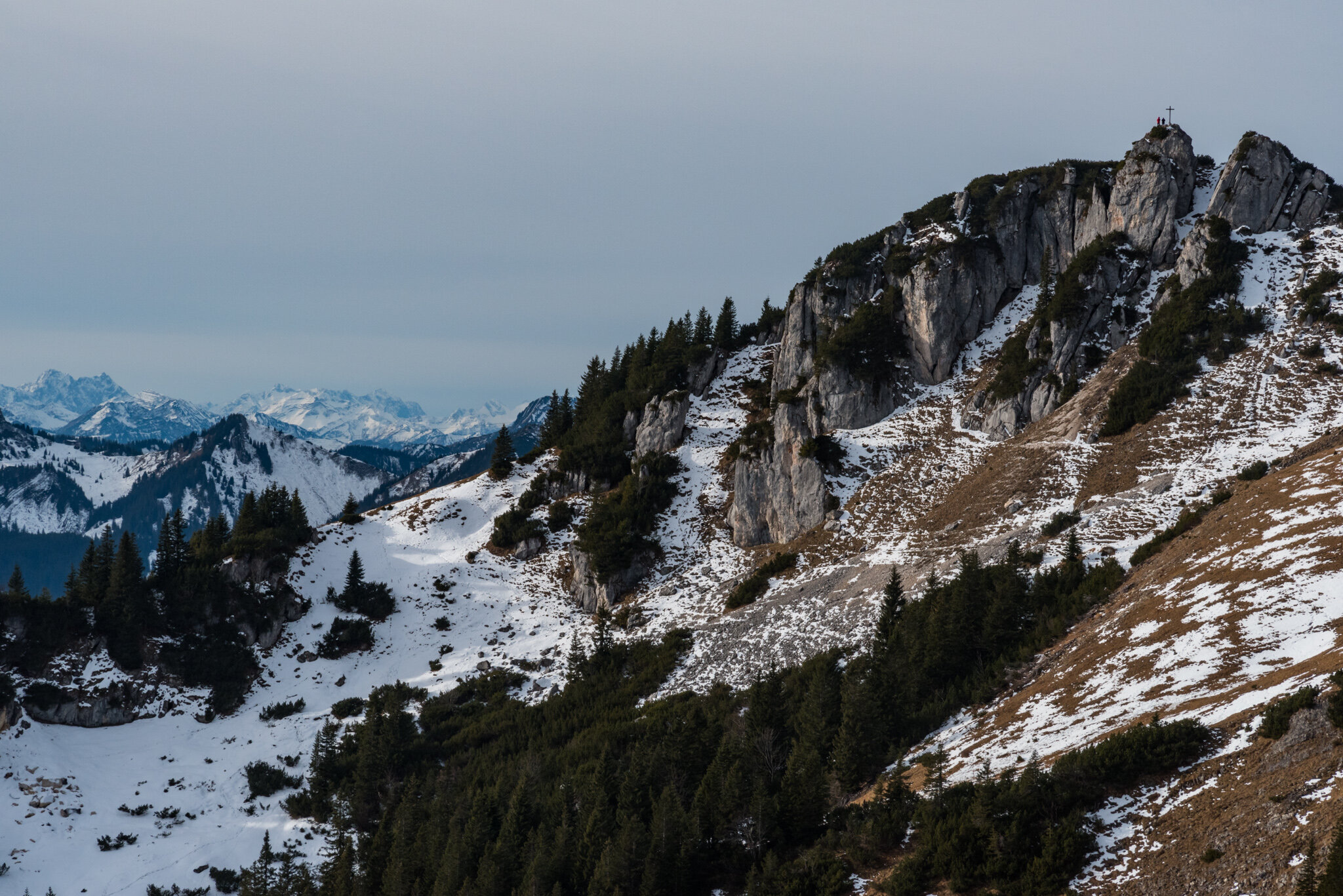
Hiking 4.5 kilometers through the mud, snow, and ice I gained 610 meters of elevation before reaching the peak, Wildalpjoch. The flat plains of Bavaria spread out to the north, the Wendelstein weather station capped the peak to the west, and the jagged peaks of Austria jutted up to the south and east. After a quick snack and two dozen photos, the cold alpine wind was too much to bear. I took one last look at the vast snow-capped mountains in the distance and headed back down to the car.
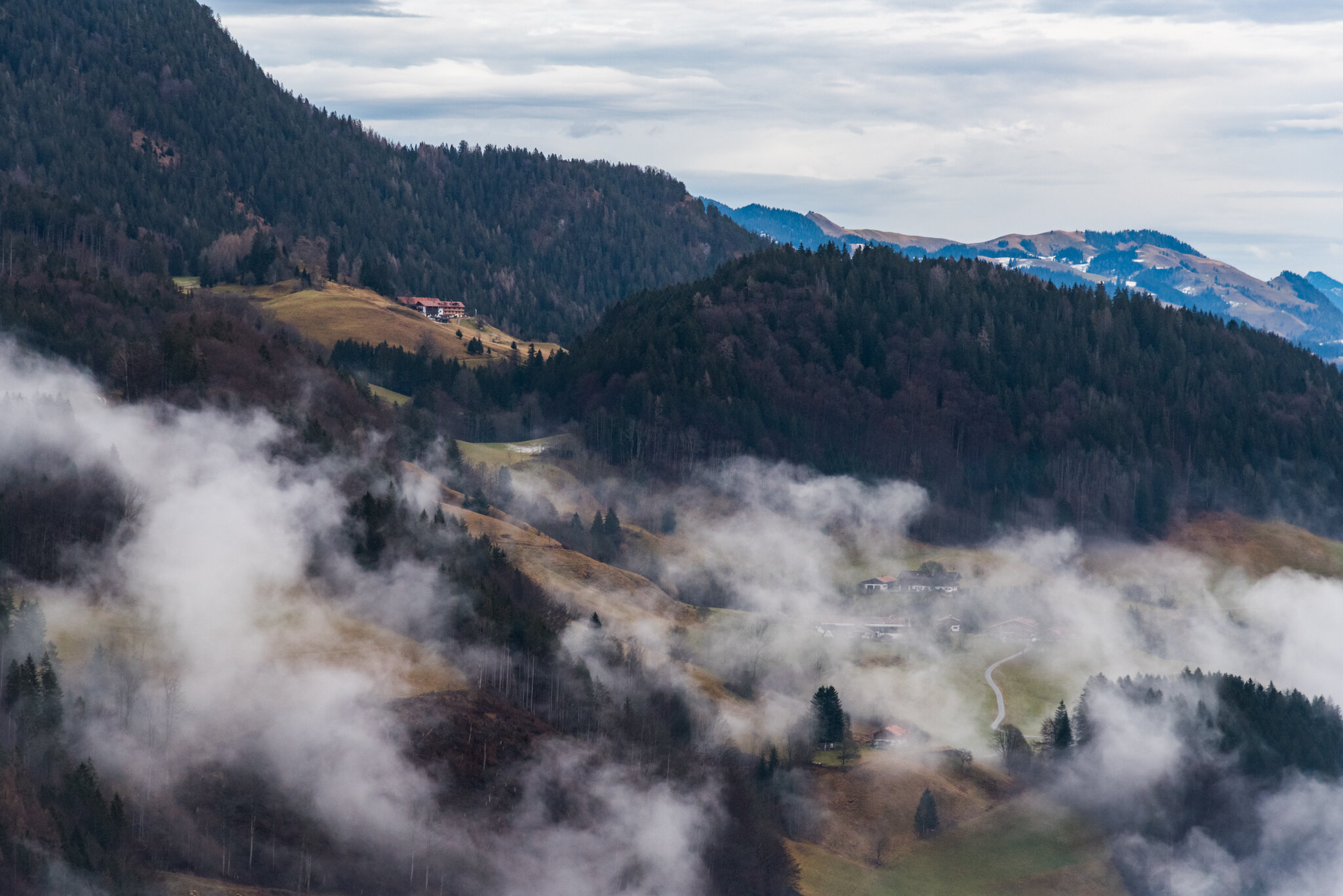
Two days later my sister and I set our sights on Brünnstein, a peak in the last row of mountains before the Austrian border. The trek started off easy enough. We wandered through empty muddy fields dotted with alms. During normal times these huts would be crowded with hikers looking for a warm place to rest their feet and a hot meal before continuing on. But these weren’t normal times. We passed hardly a soul on the hike and the alms were deserted, locked down to curb the spread of the virus.
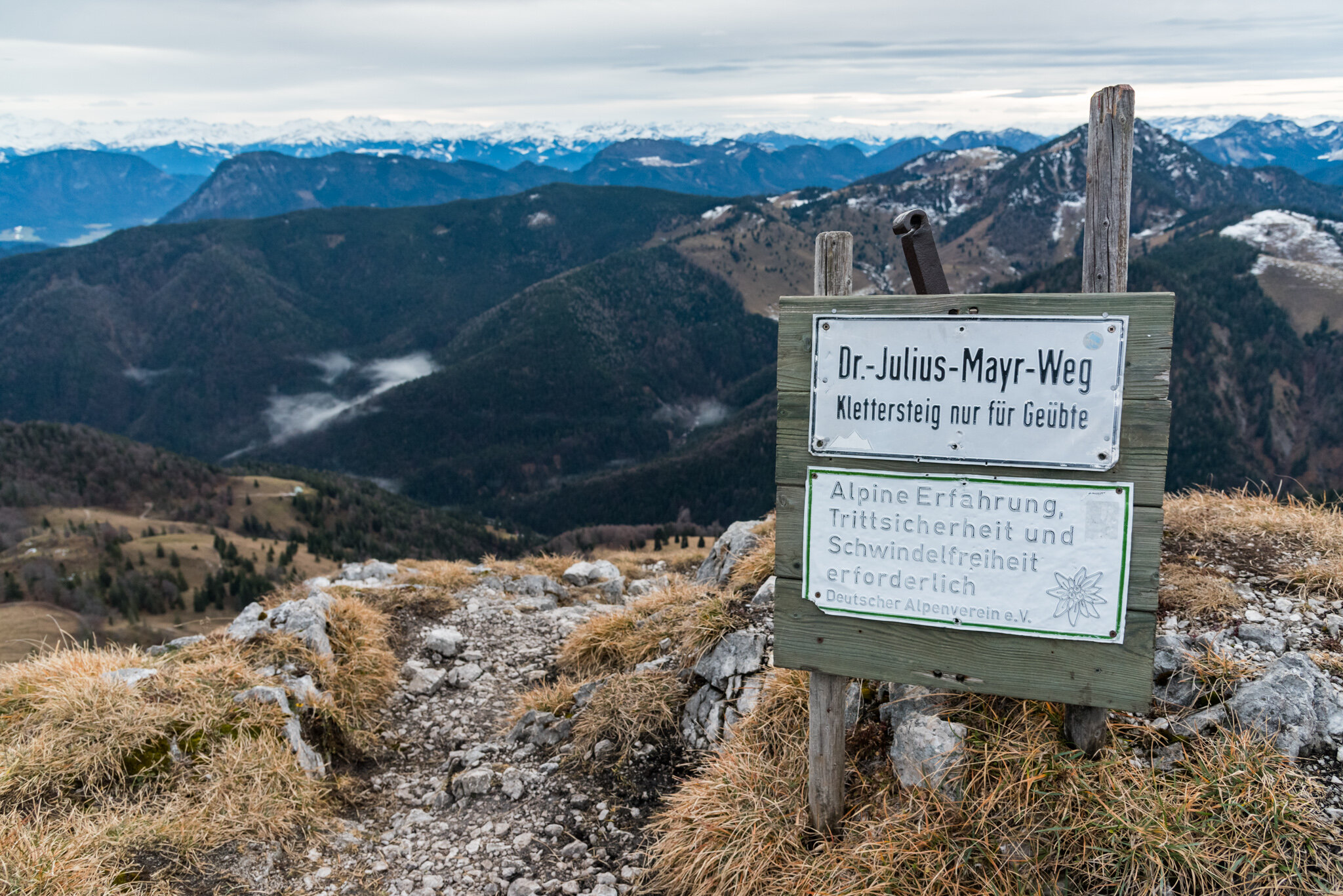
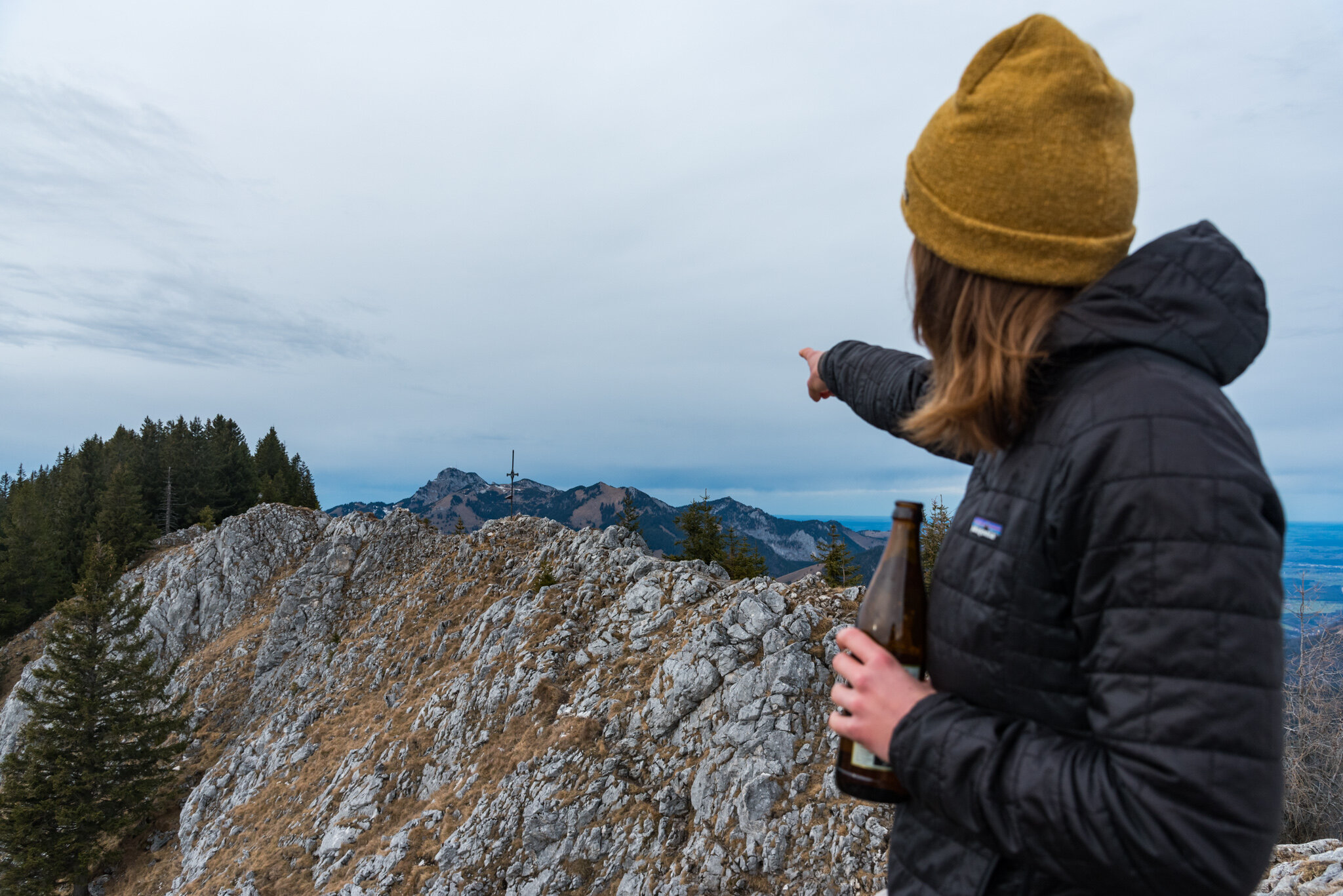
Just before the peak as the tree’s thinned our path became rocky, steep, and dotted with alpinist’s cables. We clambered up the nearly vertical slopes, using our arms to pull ourselves along the path. At the top, we were greeted by a warning sign, a tiny shrine, and a view spanning dozens of snowy peaks. We celebrated with a local summit beer and then continued back down the mountain along our 16km route.
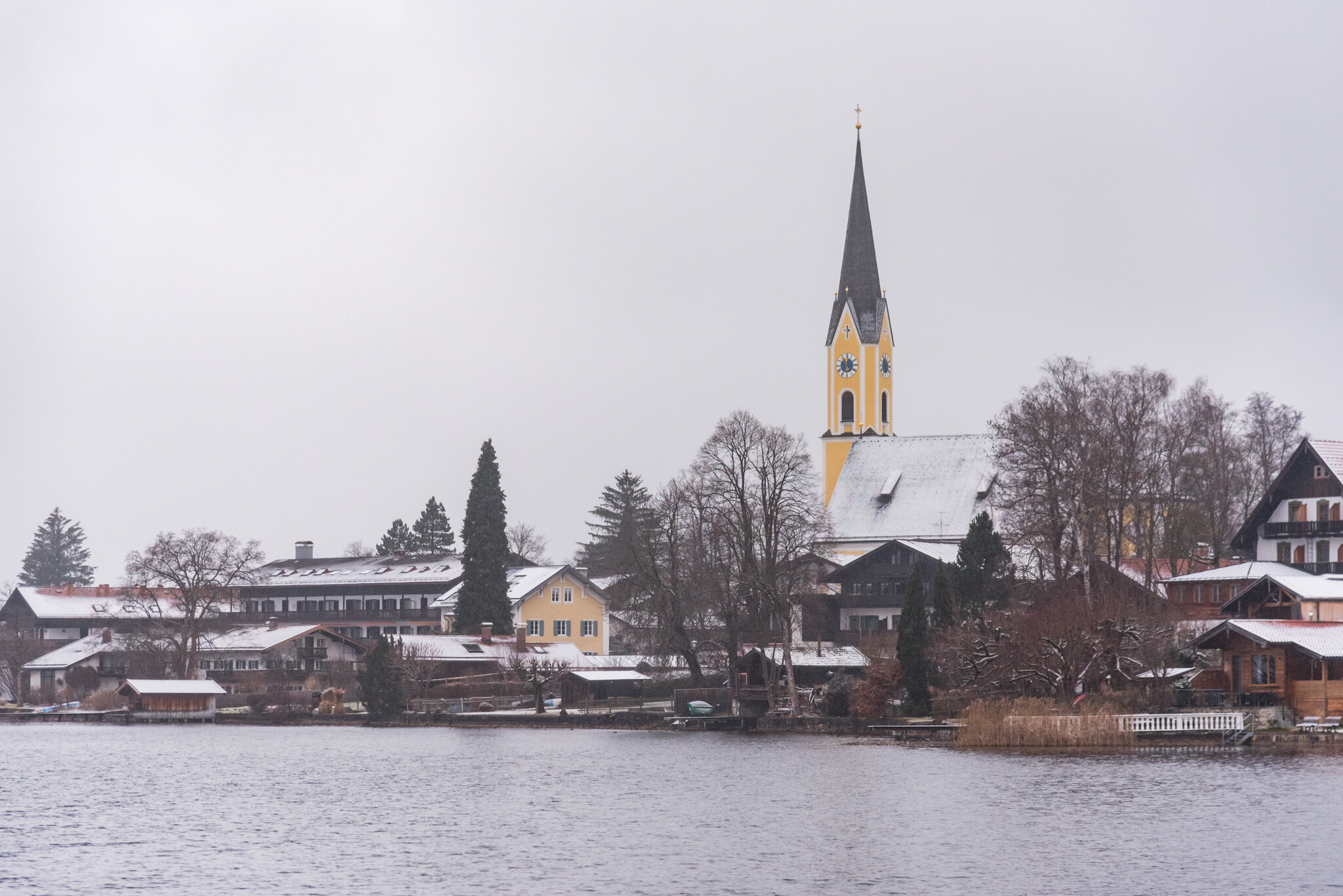
That night and into the next day Bavaria was dusted with snow. From the valleys to the peaks everything was white. Neither my sister nor I had the right gear (read: boots) but we were both determined to get outside so we donned our warmest socks and porous running shoes and ventured into the cold, wet mountains once again. We drove two towns up the road and parked the car at the Wendelstein train station.
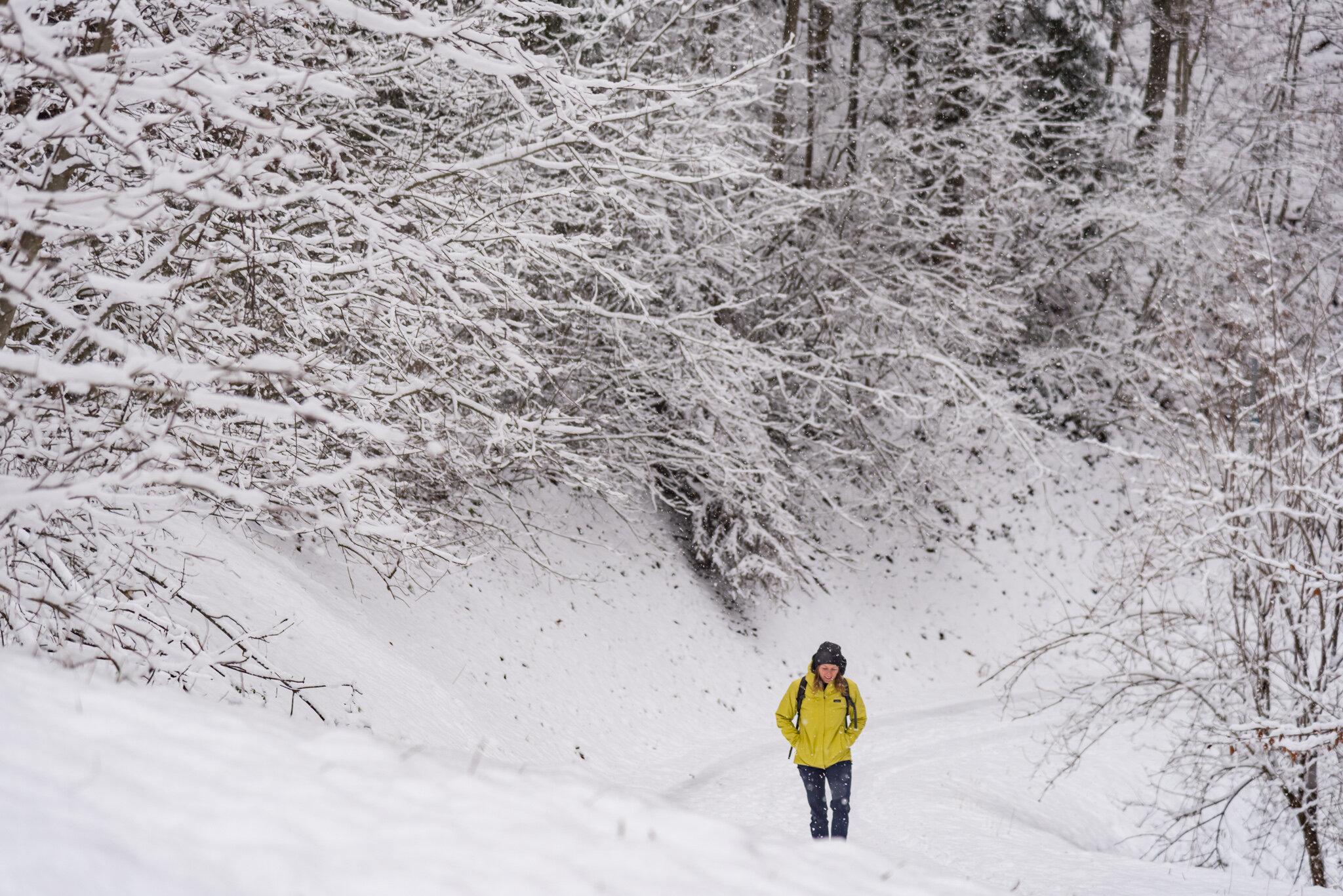
We didn’t have a goal in mind but started to walk in the direction of Wendelstein, not sure if conditions would let us get close to the summit. Before too long we were making our way through ankle-deep snowdrifts. More than one local looked at our footwear and grimaced. How un-German to be unprepared for a snow hike.
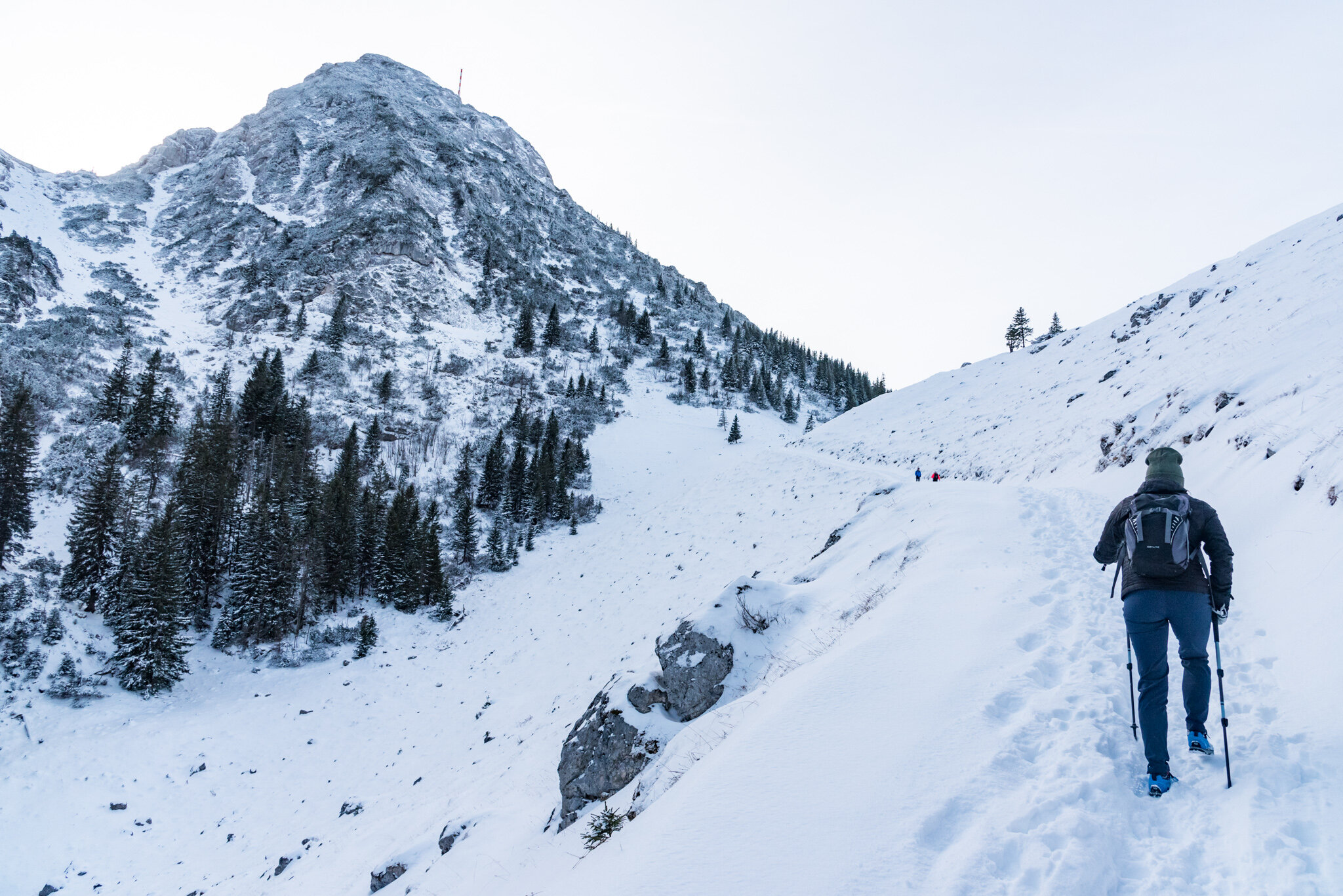
We had thought our 10:30 am start had been plenty early but at 1 pm it became clear that if we went for the Wendelstein peak we wouldn’t make it back to the car before dark. After a short debate on the risks we unceremoniously turned around and made our way back down the mountain, trekking 18 kilometers in all.
After seven days in the mountains and more than 75 kilometers of walking, hiking, and trudging through the snow I was sad to return north to Berlin. But I was also endlessly grateful that my sister’s new home provided the perfect mountain getaway. Despite the wholly non-traditional virtual Christmas celebration it still turned into a genuinely good holiday in the middle of the pandemic.
